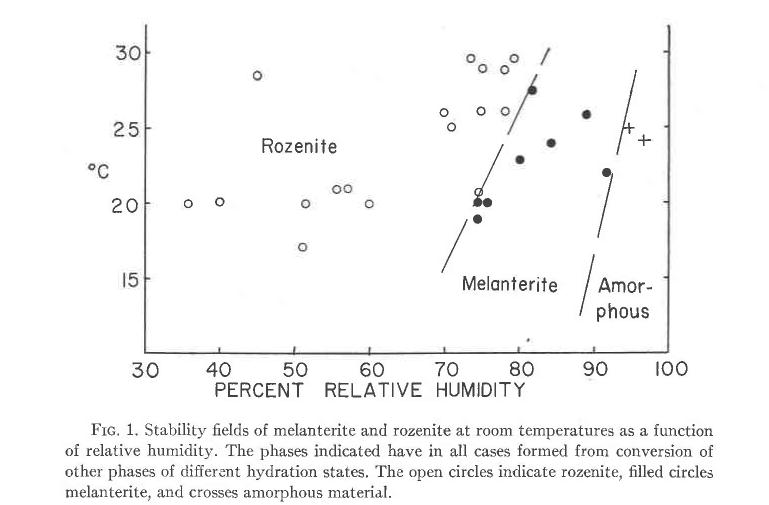Localities
At the Francon quarry, Montreal, Quebec, Canada, rozenite is relatively rare, and is found as white powdery coatings and globules on oxidised marcasite and pyrite; it is occasionally associated with natrojarosite and rarely with halotrichite (Minrec 37.1.43).
At the Sydney coalfield, Cape Breton county, Nova Scotia, Canada, hydrated sulphates associated with the decomposition of pyrite and copper-iron sulphides occur in coal in contact with the atmosphere. Melanterite, rozenite, epsomite, pickeringite, halotrichite, aluminocopiapite and sideronatrite were identified from coal seams and mines in the coalfield (CM 16.17-22).
At the type locality, Ornak Mountain, Tatra County, Lesser Poland Voivodeship, Poland, rozenite was found as efflorescences on weathered gneiss containing pyrite, and in an old gallery of the "Staszic" pyrite mine at Rudki, Poland, where air temperatures were close to 30oC. At both places it was probably formed by the dehydration of melanterite (AM 46.242).
At the Clear Creek claim, Goat Mountain, New Idria Mining District, San Benito county, California, USA, white coatings of rare rozenite on cinnabar have been identified (Minrec 36.4.355).
At the Dolliver state park, near Fort Dodge, Webster county, Iowa, USA, abundant sulphate efflorescences on sandstone consist of halotrichite, szomolnokite and rozenite. Melanterite may occur in place of the lower hydrate, rozenite, during times of high humidity (CM 11.958-970).
At abandoned coal strip mines at Sandy Run, Brown township, Vinton county, Ohio, USA, samples of altered pyrite were collected from an abandoned mine dump. The samples were encrusted either with masses of pale green fibres, or with extremely fine white powder, or with a mixture of both. The fibrous material is melanterite and the remaining material is a mixture of melanterite, rozenite and halotrichite. Whether melanterite or rozenite is the stable phase at any place or time depends on the temperature and humidity. At humidity above about 95% the melanterite deliquesces and becomes liquid.

(AM 50.1457-1461).
At the North Mesa 5 Mine, North Mesa Mine group, Temple Mountain, San Rafael Mining District, Emery county, Utah, USA, rozenite occurs in a silicified tree that has a rim of coal around it, associated with orthominasragrite, anorthominasragrite, minasragrite, bobjonesite, szomolnokite, sulphur, kornelite, montroseite, and ferricopiapite (Minrec 35.4.344).
Back to Minerals